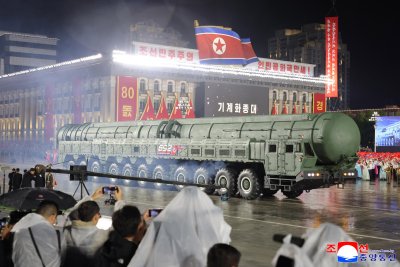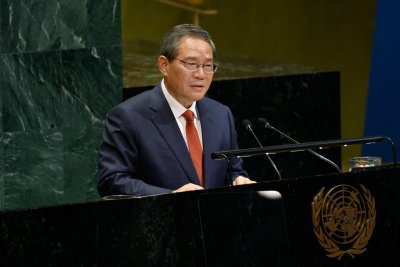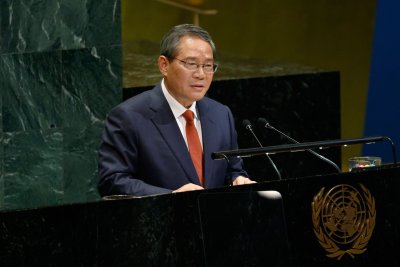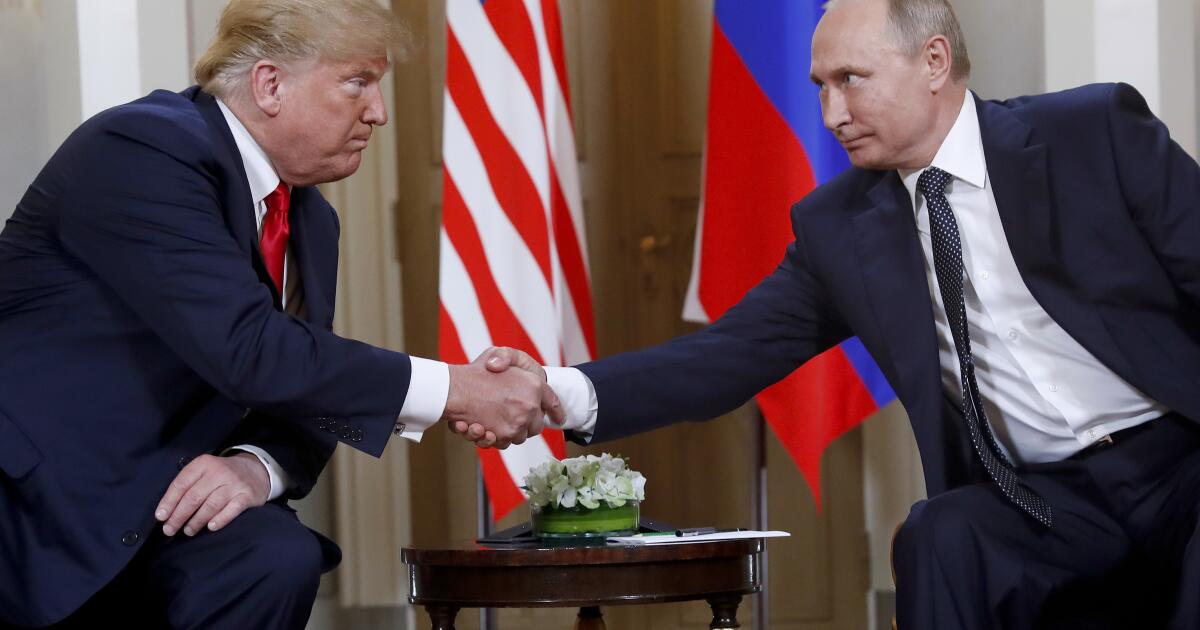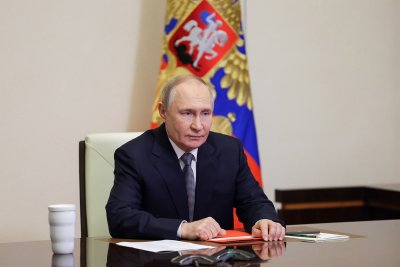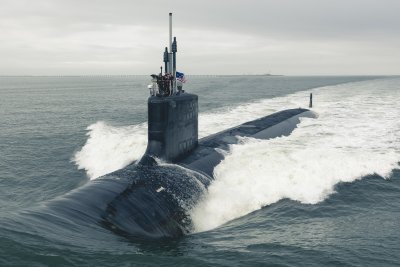North Korea unveils ‘most powerful’ new ICBM at military parade
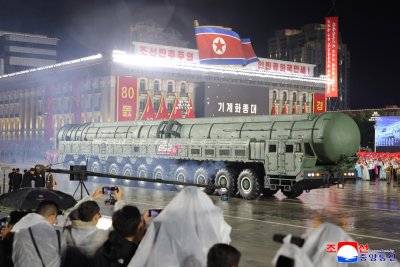
North Korea unveiled its new Hwasong-20 intercontinental ballistic missile during a military parade celebrating the 80th founding anniversary of the Workers’ Party of Korea, state media reported Saturday. Photo by KCNA/EPA
SEOUL, Oct. 11 (UPI) — North Korea showed off its new Hwasong-20 intercontinental ballistic missile at a military parade, state-run media reported on Saturday, touting it as the North’s “most powerful nuclear strategic weapon.”
The parade, held on Friday night at Kim Il Sung Square in Pyongyang, was attended by foreign dignitaries including Chinese Premier Li Qiang, Vietnamese Communist Party chief To Lam and Russian ex-President Dmitry Medvedev, the official Korean Central News Agency reported.
The event marked the 80th anniversary of the ruling Workers’ Party of Korea and highlighted the North’s recent diplomatic outreach efforts as well as its growing military strength.
After a fireworks show and 21-gun salute, thousands of marching troops paraded past the grandstand, followed by a procession of military hardware, according to KCNA.
“The spectators broke into the most enthusiastic cheers when the column of Hwasongpho-20 ICBMs, the most powerful nuclear strategic weapon system of the DPRK, entered the square,” the KCNA report said.
The Democratic People’s Republic of Korea is the official name of North Korea.
Also on display were medium- and long-range strategic missiles, drone launch vehicles, Chonma-20 battle tanks, 155mm howitzers and 600mm multiple rocket launchers, KCNA said.
In his remarks, Kim praised the “ideological and spiritual perfection” of North Korea’s military and called for its continued development.
“Our army should continue to grow into an invincible entity that destroys all threats approaching our range of self-defense,” he said. “It should steadily strengthen itself into elite armed forces which win victory after victory.”
Analysts had been anticipating the unveiling of the Hwasong-20 ICBM at Friday’s parade. Last month, Kim oversaw the final test of a new solid-fuel engine made with composite carbon fiber materials that he said would be used for the new ICBM.
Missiles using solid-fuel propellants have long been on Kim’s wish list of weapons, as they can be transported and launched more quickly than liquid-fuel models. North Korea has unveiled several long-range missiles that analysts believe are capable of reaching the continental United States.
It remains to be seen whether Pyongyang has the atmospheric re-entry vehicle technology to successfully deliver a nuclear payload, however.
Images released by KCNA showed Kim flanked by Chinese Premier Li and Vietnam’s To Lam, with Medvedev next to Lam. The parade comes as the isolated regime is making a renewed diplomatic push onto the international stage.
Last month, Kim traveled to Beijing to attend a military parade commemorating the 80th anniversary of the end of World War II, where he stood shoulder to shoulder with Russian President Vladimir Putin and Chinese President Xi Jinping.
During that visit, Kim held his first summit with Xi in six years, as ties between the longtime allies show signs of warming after a suspected rift over Pyongyang’s growing military alignment with Moscow.
On Thursday, Kim held one-on-one talks with Vietnam’s Lam and China’s Li, considered to be the second-in-command to Xi, according to KCNA.
At an event held on the eve of the anniversary, Kim vowed to transform North Korea into a “more affluent and beautiful land” and a “socialist paradise.”
